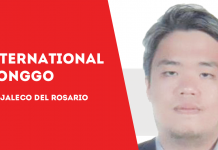
[av_one_full first min_height=” vertical_alignment=” space=” custom_margin=” margin=’0px’ padding=’0px’ border=” border_color=” radius=’0px’ background_color=” src=” background_position=’top left’ background_repeat=’no-repeat’ animation=”]
[av_heading heading=’PEOPLE POWWOW ‘ tag=’h3′ style=’blockquote modern-quote’ size=’30’ subheading_active=’subheading_below’ subheading_size=’15’ padding=’10’ color=” custom_font=” av-medium-font-size-title=” av-small-font-size-title=” av-mini-font-size-title=” av-medium-font-size=” av-small-font-size=” av-mini-font-size=” admin_preview_bg=”]
BY HERBERT VEGO
[/av_heading]
[av_textblock size=” font_color=” color=” av-medium-font-size=” av-small-font-size=” av-mini-font-size=” admin_preview_bg=”]
Sunday, December 10, 2017
[/av_textblock]
[av_textblock size=’18’ font_color=” color=” av-medium-font-size=” av-small-font-size=” av-mini-font-size=” admin_preview_bg=”]
SUDDENLY, everybody is talking and reading about Dengvaxia without getting into the bottom line of the controversy; no thanks to the contradictory bits and pieces breaking into print and rocking the air. Take note of these few lines from Manila Times columnist Rigoberto Tiglao:
“Was there corruption on a massive scale, with former President Aquino earning hundreds of millions of pesos in dirty money from his administration’s purchase of Sanofi’s dengue vaccine Dengvaxia?”
The entire column depicted PNoy as having masterminded the purchase of P3.5 billion worth of the anti-dengue Dengvaxia vaccine in cahoots with then Health secretary Janette Garin. It could be true, but if it’s to divert public attention away from bigger anomalies by the current Duterte administration, it could boomerang. Garin is a member of the dynastic Garin family of Guimbal, Iloilo that has affiliated with the administration party, PDP-Laban.
Has that Dengvaxia deal done more harm than the P6.4-billion shabu that had entered the country through the “green lane” of the Bureau of Customs? We are being kept in the dark as to how that 600-kilo shipment from China ended up.
It was Dengvaxia’s French manufacturer itself, Sanofi Pasteur, that revealed late in November this year that its anti-dengue vaccine “poses more risks for recipients who had no prior infection.” The news as slanted in the local media has sown premature panic among the vaccinated children and their parents. So far, however, no specific instances could be cited that the vaccine itself, rather than dengue, has caused deaths among 730,000 vaccine recipients.
The records show that it was in April 2016 when the Department of Health (DOH) launched the program in the Philippines. Already, 10 other countries – Brazil, Costa Rica, El Salvador, Guatemala, Mexico, Paraguay, Peru, Indonesia, Singapore, and Thailand – have approved its commercial release.
Within the year 2016, four kids who had taken the shot died. But Garin as DOH secretary quickly appeased the nation with her assurance that the deaths were unrelated to the vaccine.
As reported in the March 31, 2017 issue of the Philippine Star, the DOH had earlier made sure that the vaccine was accessible in medical clinics; and allowed Watsons Pharmacy to sell it over the counter in selected outlets manned by doctors who would administer the vaccination.
But the Food and Drug Administration (FDA) later directed Sanofi to hold Dengvaxia’s over- the-counter accessibility because it had approved it as a prescription drug for people 9 to 45 years old.
The way we parents understand vaccination, it’s more preventive than curative. A vaccine contains weakened “version” of the offending virus, inducing an immune response that produces antibodies capable of fighting infections.
Dengvaxia, approved for Philippine use by the FDA, is thus intended to prevent dengue fever. We are aware that some diseases that once injured or killed thousands of children – polio, for example – have been eliminated completely.
Now, if there are Dengvaxia-vaccinated children who catch dengue thereafter, it proves nothing but the inefficacy of the vaccine. If so, then why are we wailing only now that more than a year and a half has passed since we bought a million vials of the vaccine?
Methinks the proper issue that needs to be answered by both PNoy and Garin is the amount of P3.5 billion that the government paid for one million vials of Dengvaxia. That’s P3,500 per vial. If it’s true that the same drug costs only 12 rupees in India (the equivalent of P9.35 in Philippine money), the two could indeed be in deep, “overpricing” trouble. (hvego31@gmail.com/PN)
[/av_textblock]
[/av_one_full]



